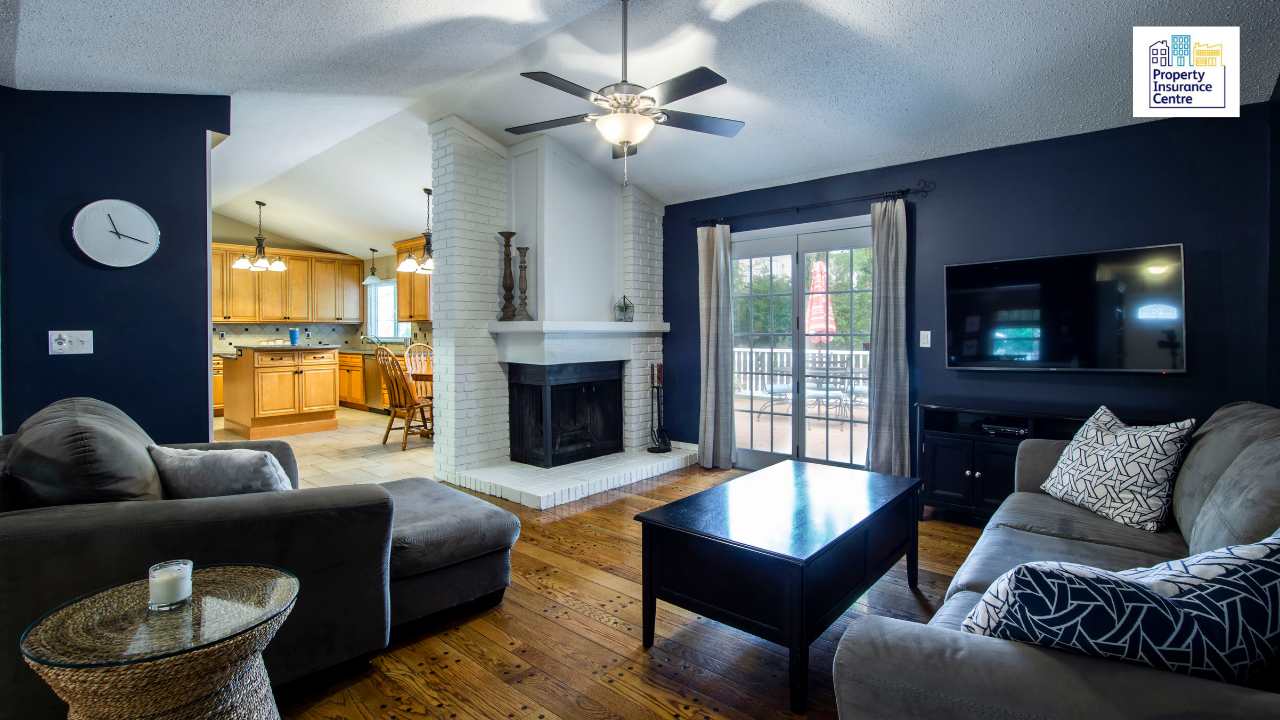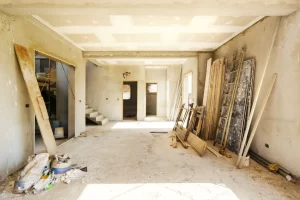Top Building Insurance Pitfalls To Trigger F.O.M.O.

Here you can quickly discover all about building insurance and top building insurance pitfalls.. Whether you are a homeowner or a landlord, ensuring adequate protection for your property is crucial. However, navigating the complexities of building insurance can be challenging, and many people fall prey to common pitfalls that can have serious consequences. In this section, we will discuss the top building insurance pitfalls to help you avoid potential issues in the future.
Key Takeaways
Building insurance is essential to protect your property, but it can be complex.
Many people make common mistakes when dealing with building insurance, which can result in inadequate coverage or denied claims.
Being aware of these pitfalls can help you avoid potential issues and ensure you have the right coverage in place.
Understanding Building Insurance Coverage
Building insurance coverage can vary significantly between policies, and it is essential to ensure that you have the right level of protection for your property. Here, we will delve into the various aspects of building insurance coverage, so you can be confident that you have the right policy for your needs.
What is Covered?
Building insurance typically covers damage caused by a range of perils, including fire, theft, vandalism, and natural disasters. It may also cover damage caused by burst pipes, subsidence, or accidental damage.
It is essential to read the policy documents carefully, so you understand what is included and excluded from your coverage. This may include limits on the amount you can claim for certain types of damage and any excess that you will need to pay towards a claim.

Types of Building Insurance Coverage
The two main types of building insurance coverage are building cover and contents cover.
Buildings cover protects the structure of your property, including walls, roofs, floors, and permanent fixtures. It can also include outbuildings, garages, and fences. Buildings cover is typically a requirement for mortgage lenders.
Contents cover protects the belongings inside your property, such as furniture, electrical goods, and personal possessions. Some policies will offer a combined buildings and contents cover.
Additional Coverage
There may be additional coverage options available depending on the insurer and policy. For example, you may be able to purchase legal expenses cover or rent guarantee insurance to protect your rental income.
It is important to consider your specific needs when selecting additional coverage options. These can be added to your policy for an additional premium.
Exclusions
Building insurance policies will have exclusions, which are specific events or circumstances that are not covered by your policy. These exclusions will vary between insurers and policies, so it is important to read the policy documents carefully.
Typical exclusions may include issues caused by wear and tear, damage caused by pests, or damage caused by criminal activity by someone living in your property. Some policies will also exclude damage caused by certain types of natural disasters, such as floods or earthquakes.
Understanding your building insurance coverage is essential to ensure that you have the right level of protection for your property. By reviewing your policy documents carefully and considering your specific needs, you can ensure that you have adequate coverage in place.
Meeting Building Insurance Requirements
When applying for building insurance, it is important to meet the specific requirements set by insurance companies. Failure to meet these requirements could result in your policy being deemed invalid, leaving you with no coverage in the event of a claim.
One common requirement is the installation of smoke detectors in your property. Make sure to install the appropriate number of smoke detectors in recommended locations throughout your building.
Another requirement may be the installation of a security system, such as alarms and deadbolts, to deter theft and break-ins. Check with your insurance company to see what specific security measures are required for your policy.
It is also important to accurately report the value of your property and its contents. Providing an inaccurate estimate may result in inadequate coverage in the event of a claim.
Be sure to carefully read your policy documents and ask your insurance company any questions about the requirements and coverage before signing up for a policy.

Meeting the specific requirements for building insurance is crucial to ensure your policy remains valid. Take the time to carefully understand what is required and accurately assess the value of your property and its contents.
Factors that Impact Building Insurance Premiums
When determining the cost of your building insurance premiums, there are several factors that insurance companies take into consideration. Understanding these factors can help you find ways to reduce your insurance costs and ensure you have the right level of coverage.
One key factor is the location of your property. If your property is located in an area with a high risk of natural disasters, such as floods or earthquakes, your insurance premiums will be higher.
The age and condition of your property is also a significant factor. If your property is older or in poor condition, it may be more at risk of damage or deterioration, which can result in higher insurance premiums.
The level of coverage you require will also affect your premiums. If you choose to have a higher level of coverage, your insurance premiums will be higher.
Another important consideration is your claim history. If you have a history of making frequent claims, your insurance premiums may increase to reflect the increased risk associated with insuring your property.
Finally, your insurance company may also take into account your credit score. If you have a low credit score, you may be considered a higher risk and could face higher insurance premiums as a result.
By understanding these factors, you can take steps to reduce your insurance costs, such as choosing a higher deductible or improving the condition of your property. It is important to review your policy regularly to ensure you have the right level of coverage at a fair price.

Tips for Choosing the Right Building Insurance Policy
Choosing the right building insurance policy for your needs can be a daunting task, but it is crucial to ensure you have adequate coverage for your property. Here are some expert tips to guide you:
Compare quotes: Don’t settle for the first policy you come across. Shop around and get quotes from multiple insurers to find the best value for money.
Assess the level of coverage: Make sure you understand what is and isn’t covered by your policy. Consider factors such as the age and condition of your building, and any special features you may want to insure.
Read policy documents thoroughly: Don’t rely solely on the insurer’s website or sales pitch. Read the policy documents carefully and ask questions if anything is unclear.
Consider the excess: The excess is the amount you’ll need to pay towards a claim. A higher excess usually means lower premiums, but make sure you can afford to pay the excess if necessary.
Check for add-ons: Additional coverage, such as accidental damage or legal expenses, can be beneficial, but make sure you’re not paying for coverage you don’t need.
Check the insurer’s reputation: Look for reviews or ratings of the insurer online to gauge their reliability and customer service.
By following these tips, you can ensure you have the right building insurance policy in place to protect your property and avoid potential pitfalls.

When disaster strikes, it’s essential to know how to navigate the building insurance claims process. Whether you’re dealing with damage from a natural disaster, theft, or other unexpected events, filing an insurance claim can help you recover the costs of repairs or replacements.
The first step in making a claim is to review your insurance policy carefully. Familiarise yourself with the coverage amount and any limits or exclusions that may apply to your claim. You’ll also need to understand your deductible, which is the amount you must pay out of pocket before the insurance company will cover the rest of the costs. If you’re unsure about any aspect of your policy, contact your insurance agent for assistance.
Once you’ve reviewed your policy and assessed the damage, it’s time to initiate the claims process. Contact your insurance company as soon as possible to report the damage and provide any necessary information. You’ll likely be asked to provide documentation, such as photos or receipts, to support your claim. Keep in mind that the insurance company will need to verify the damage and determine the cause before approving any payouts.
It’s important to be patient and cooperative throughout the claims process. Your insurance company will likely assign a claims adjuster to assess the damage and determine the appropriate payout amount. Be sure to provide any information or documentation requested by the adjuster promptly. Keep copies of all correspondence and documentation related to your claim.
If your claim is approved, the insurance company will issue a payout to cover the costs of repairs or replacements, up to the coverage amount specified in your policy. If the damage is extensive, the insurance company may issue multiple payments over time as repairs are completed.
In the event that your claim is denied, don’t be afraid to ask questions and seek clarification on the rationale behind the denial. You may be able to provide additional information or documentation to support your claim and appeal the decision.
By understanding the building insurance claims process and being prepared to navigate it effectively, you can have peace of mind knowing that you’re covered in the event of unexpected damage to your property.
Common Mistakes to Avoid in Building Insurance
Building insurance is an essential aspect of protecting your property, but there are common mistakes that people make when dealing with their policies. By avoiding these mistakes, you can ensure that you have the right coverage and avoid potential pitfalls in the future.
Not Understanding your Policy
One of the biggest mistakes people make is not fully understanding their building insurance policy. It’s important to read the fine print and understand what is and isn’t covered. You should also be aware of any limitations or exclusions that may apply to your policy. This can help you avoid any surprises or unexpected costs in the event of a claim.
Underinsuring your Property
Another common mistake is underinsuring your property. It’s crucial to ensure that your policy covers the full cost of rebuilding your property in the event of a total loss. Underinsuring can leave you in a difficult financial situation should the worst happen.
Forgetting to Update your Policy
Many people forget to update their building insurance policy when they make changes to their property. This can include renovations, additions, or even changes in the value of your property. Failure to update your policy can leave you without adequate coverage.
Choosing a Policy Based Solely on Price
While it’s important to find a building insurance policy that fits your budget, choosing a policy based solely on price can be a mistake. It’s important to compare coverage between policies and assess the level of protection that each one offers. Cheaper policies may not provide the same level of coverage as more expensive ones.
Not Maintaining your Property
Finally, not maintaining your property can be a costly mistake. Insurance companies may deny claims if damage occurred due to lack of maintenance. It’s important to regularly inspect and maintain your property to avoid any potential issues.
Avoiding these common mistakes can help ensure that you have the right building insurance coverage for your property. By reading and understanding your policy, updating it regularly, and maintaining your property, you can avoid potential pitfalls and protect your investment.

Tips for Choosing the Right Building Insurance Policy
Choosing the right building insurance policy can be a daunting task, but it is crucial to ensure your property is adequately protected. Here are some expert tips to help you make the right choice:
Compare quotes: Always get multiple quotes from different insurance providers to ensure you are getting the best deal.
Read policy documents thoroughly: Don’t just skim through the policy documents – read them carefully to understand what is and isn’t covered by the policy.
Assess the level of coverage: What type of coverage do you need? How much coverage do you need? Make sure the policy you choose provides the appropriate level of coverage.
Consider the excess: The excess is the amount you will have to pay out of pocket before the insurance kicks in. Consider whether you can afford the excess amount before choosing a policy.
Check for exclusions: Make sure you are aware of any exclusions or limitations in the policy. For example, some policies may not cover damage caused by natural disasters like floods or earthquakes.
By following these tips, you can choose the right building insurance policy for your needs and avoid any potential pitfalls.
Understanding the Fine Print in Building Insurance Policies
When it comes to building insurance, it is crucial to read and understand the fine print in your policy to ensure that you are adequately covered in the event of a claim. This section will explain the importance of paying attention to the details of your policy and provide guidance on how to interpret the policy language.
One of the key things to look out for in the fine print is any limitations or exclusions. These are the specific situations or types of damage that are not covered by your policy. Some common exclusions in building insurance policies include damage caused by natural disasters, such as floods or earthquakes, or damage caused by wear and tear or poor maintenance.
It is also important to pay attention to the deductibles and excesses outlined in your policy. These are the amounts that you will be responsible for paying in the event of a claim. Make sure you understand these amounts and that they are affordable for you.
Another area to focus on is the coverage limits in your policy. This refers to the maximum amount that your insurance company will pay out for a claim. Ensure that the coverage limits are sufficient for your needs, taking into account the value of your property and any contents or fixtures that you want to insure.
If you are having trouble understanding the language of your policy, don’t be afraid to ask for clarification from your insurer. They should be able to explain the terms and conditions in plain language that is easy to understand.
Remember, the fine print in your building insurance policy can make a big difference when it comes to making a claim. By taking the time to read and understand the details, you can ensure that you have the right coverage in place and avoid any nasty surprises down the line.

Conclusion
Building insurance can be complex and overwhelming, but understanding the common pitfalls and taking steps to avoid them can help you protect your property and finances. By following the tips and strategies outlined in this article, you can navigate the intricacies of building insurance with confidence.
Remember to thoroughly assess your coverage needs, compare quotes from different providers, and understand the fine print of your policy. It is also crucial to meet the specific requirements set by insurance companies and be prepared for the claims process.
Stay Protected and Informed
By avoiding common mistakes and paying close attention to your building insurance coverage, you can ensure that you are properly protected in the event of unexpected damage or loss to your property. Always read policy documents carefully and consider consulting with a professional if you have any questions or concerns.
Follow the comprehensive building insurance checklist provided in this article to assess your coverage needs and identify any potential gaps in your policy. With these tools and insights, you can avoid common building insurance pitfalls and protect your property with confidence.
FAQ
Q: What are some common pitfalls people face when dealing with building insurance?
A: Some common pitfalls include underinsuring the property, failing to meet policy requirements, and not understanding the coverage limitations.
Q: What does building insurance coverage typically include?
A: Building insurance coverage typically includes protection against damage caused by fire, storms, theft, and vandalism. It may also cover structural repairs and rebuilding costs.
Q: What are the specific requirements set by insurance companies when applying for building insurance?
A: Specific requirements may include having a certain level of security measures in place, regular property inspections, and providing accurate information about the property.
A: Factors that impact building insurance premiums include the property’s location, age, construction materials, previous claims history, and the level of coverage desired.
Q: What tips can help choose the right building insurance policy?
A: Some tips for choosing the right building insurance policy include comparing quotes from multiple insurers, reading policy documents thoroughly, and assessing the level of coverage needed for your property.
A: To navigate the building insurance claims process, you should document the damage, notify your insurer promptly, provide any requested documentation, and follow their instructions throughout the process.
Q: What are some common mistakes to avoid in building insurance?
A: Some common mistakes to avoid include not reviewing your policy regularly, underestimating the value of your property, and assuming certain damages are covered without confirming it.
Q: What should be included in a comprehensive building insurance checklist?
A: A comprehensive building insurance checklist should include assessing the property’s value, understanding policy exclusions, reviewing coverage limits, and ensuring adequate protection for contents.
Q: Why is it important to understand the fine print in building insurance policies?
A: Understanding the fine print helps you avoid surprises and ensures you know the scope of coverage, any limitations or exclusions, and what is required of you as the policyholder.







